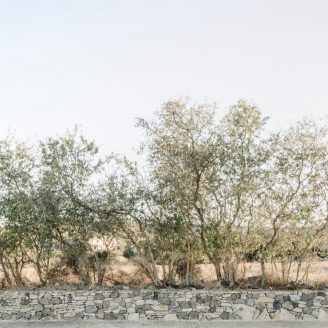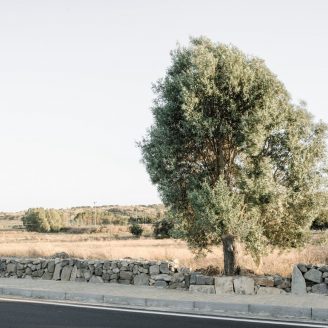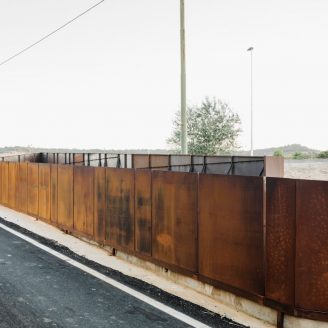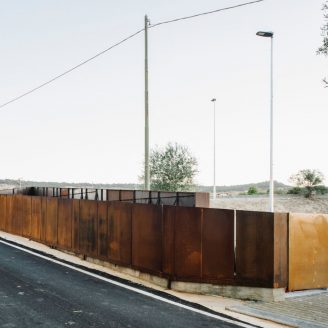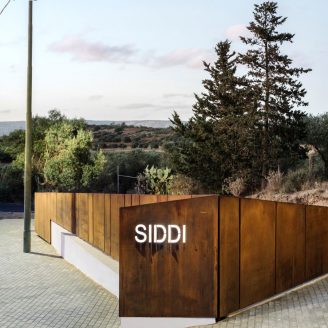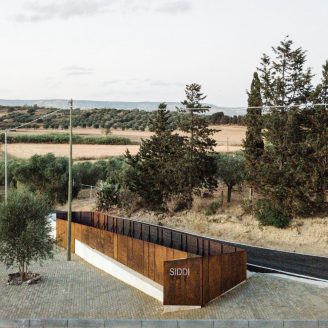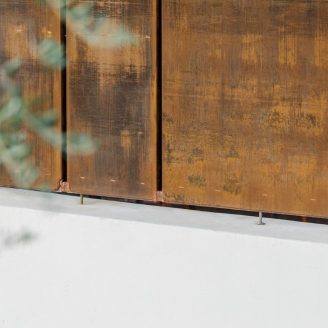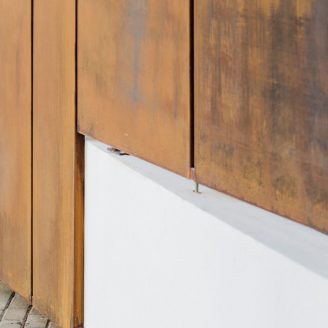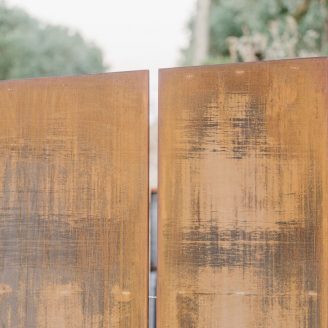In the heart of Marmilla (Sardinia, Italy), the municipality of Siddi has acquired a new urban threshold, resulting from an urban requalification project curated by architect Martino Picchedda, which transforms the village’s main entrance (Via Napoli) into a “poetic urban threshold” and a true story of welcome. The intervention transcends mere infrastructural function, elevating itself to an act of refined architectural and cultural sensitivity.
The project, co-funded by the Sardinia Region with the Municipality of Siddi, addressed historical criticalities such as the deteriorated road surface and the absence of sidewalks. Functionality was restored with new asphalt and sidewalks, including a dry-stone wall rebuilt utilizing local basalt and marl stones.
However, it is in the narrative dimension that the work reveals its depth. The three key elements—corten steel, local stone, and light—intertwine memory, identity, and landscape. The architect chose to reinterpret the ancestral forms of the Giants’ Tombs, extraordinary megalithic monuments that dot Sardinia, of which Siddi preserves the precious example, “Sa Domu e S’orcu”.
This formal reference manifests in the reinterpretation of a dangerous ditch, transformed from a “critical void” into a place of rest and contemplation, a narrative and symbolic focal point. A sheet of corten steel, precisely shaped, embraces the ditch, evoking the enveloping curve of a Nuragic tomb section and functioning as protection, barrier, but also sculpture.
Corten is treated as a “living material” that changes over time and dialogues with the colors of the earth. Its oxidation is intended not as degradation but as maturation, a process that links the work inextricably to the landscape of Marmilla through chromatic variations that recall the ocher of wheat and the brown of bare earth.
The role of light is also fundamental: by night, integrated lighting transforms the area into a welcoming and safe landmark, while a corten totem with the luminous engraving “SIDDI” acts as an urban beacon and an identity sign, uniting Nuragic memory and contemporaneity.
The redevelopment of Via Napoli is a placemaking operation, which transforms a thoroughfare into a place of meeting, rest, and reflection. The use of local stones and durable low-maintenance materials like corten reduces environmental impact, but the true sustainability lies in the ability to create shared cultural heritage. Siddi has not simply “fixed” a road: it has created a “living threshold, capable of telling its own story“.



